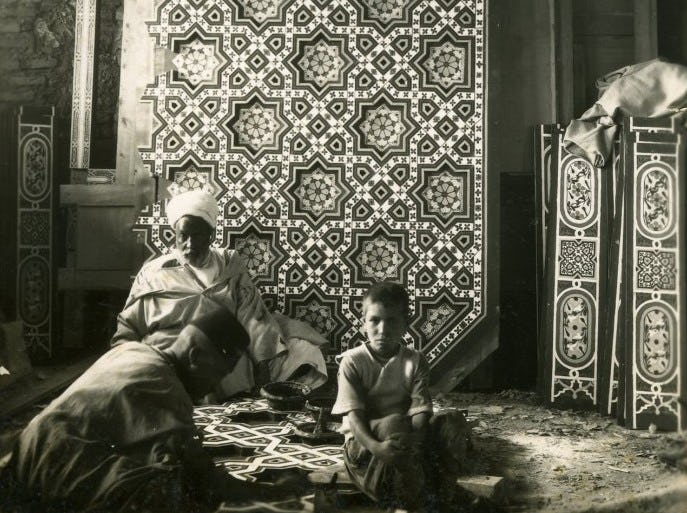Carved Wooden Railing with Jali (Screen) Insets
Date1937
PeriodKingdom of Morocco
MediumWood
DimensionsOverall: 37 1/2 x 5 1/2 x 329 in. (95.3 x 14 x 835.7cm)
ClassificationsWoodwork
Object number64.4
DescriptionThe carved, latticework balustrade separates the foyer and central courtyard. Called a mashrabiyya in Arabic, this architectural element is typically used as window screens and balcony railings. The wooden screens are crafted from turned wood joined by polygonal blocks, forming intricate, geometric patterns.The mashrabiyya were created by Moroccan craftsmen in the 1930s. They were commissioned in 1937 from the firm S.A.L.A.M. René Martin, located in the Moroccan capital of Rabat. In addition to the mashrabiyya, the commission included other architectural features, including stucco, ceramic tile, and wood for the foyer, living room, central courtyard, and the Moroccan Room (the bedroom of Duke’s former husband, Jame Cromwell).
On View
On viewCollections
Dated 1271 AH (1854 - 1855 CE)
Dated 1271 AH (1854 - 1855 CE)
Dated 1271 AH (1854 - 1855 CE)
Dated 1271 AH (1854 - 1855 CE)
Dated 1271 AH (1854 - 1855 CE)
Dated 1271 AH (1854 - 1855 CE)














